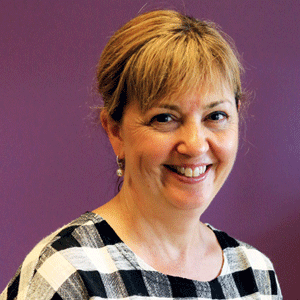THANK YOU FOR SUBSCRIBING

Marise Mcconaghy, Principal, Strathcona Girls Grammar
With the onset of the pandemic early this year, schools were sent into a tailspin as they were forced to implement large scale remote learning systems in an incredibly short time frame. In the process, teachers, students, and parents were all granted unique access into each other’s lives at home, as our deeply entrenched model of face-to-face classroom teaching and learning was upended.
As an independent school, Strathcona was fortunate to be able to start planning and developing our approach to remote learning immediately, which allowed time for trials, training, feedback, and adjustments. Early on we recognised the need for our remote learning model to foster continuity and familiarity for our students, who were already being forced to process so many changes happening around them. This is how we landed on the name ‘Continuous Learning’ for our program. We were fortunate to have the expertise of a range of talented staff to ensure that continuous learning did, in fact, occur and the ‘pivot’ was very smooth.
For many students, relationships are what makes school a safe place — particularly for girls. Therefore, our Continuous Learning program needed to be well equipped for collaboration. For students in years 4 to 12, we used Microsoft Teams to achieve this, with teachers even conducting food technology, drama classes and play rehearsals via Teams. It was important to the School to continue its high level of care for the wellbeing of both students and staff and this occurred successfully in the online forum.
While schools have been incorporating digital technologies into the classroom for a long time, until now there hasn’t been the pressing need (or the motivation in some cases) to implement and test technologies in such a rapid and concentrated way. This year though, students have learnt to use a wide range of new technologies and tools in the remote learning context, and in the process they’ve developed new skills and have been able to exert greater autonomy over their learning.
For teachers, while they’ve had to overcome enormous challenges and essentially relearn how to do their jobs — with many overseeing their own kids’ home-schooling simultaneously — the switch to remote learning has also provided an opportunity for them rethink and reframe their role. Teachers have come to be seen less as ‘knowledge delivery systems’ and more as mentors, guides and collaborators.
They have developed a myriad of new skills and have been able to harness their creativity, something they don’t always have the opportunity to do in the more regulated classroom environment. Collaboration between teachers has been critical and in an unexpected but welcome development, some teachers who typically may not have taken on leadership roles have stepped up and shone in assisting other teachers and staff in delivering Continuous Learning.
The events of this year have provided us with a rare opportunity to reframe how we think about teaching and learning and highlighted the significant role technology has to play in enhancing both. I’m confident that digital technologies and e-learning will continue to play a larger and more central role in schools going forward now that we’ve mastered and realised the benefits of project management platforms, video conferencing software, and instant messaging apps. Teachers and students alike are now more aware of and excited by the infinite number of possibilities for creativity and collaboration through technology in an education setting.
While we’re all relishing the return to the energy and excitement of school in-person, we can’t afford to forget the valuable lessons we’ve learnt this year. When applied thoughtfully, technology enables us to reimagine and improve the school experience for teachers, students and their families. And while no one could have predicted this strange and testing year, schools have risen spectacularly to the challenges it has presented, and I think we would be doing ourselves a disservice to simply return exactly to the ways we’ve always done things.
Weekly Brief
I agree We use cookies on this website to enhance your user experience. By clicking any link on this page you are giving your consent for us to set cookies. More info
Read Also













